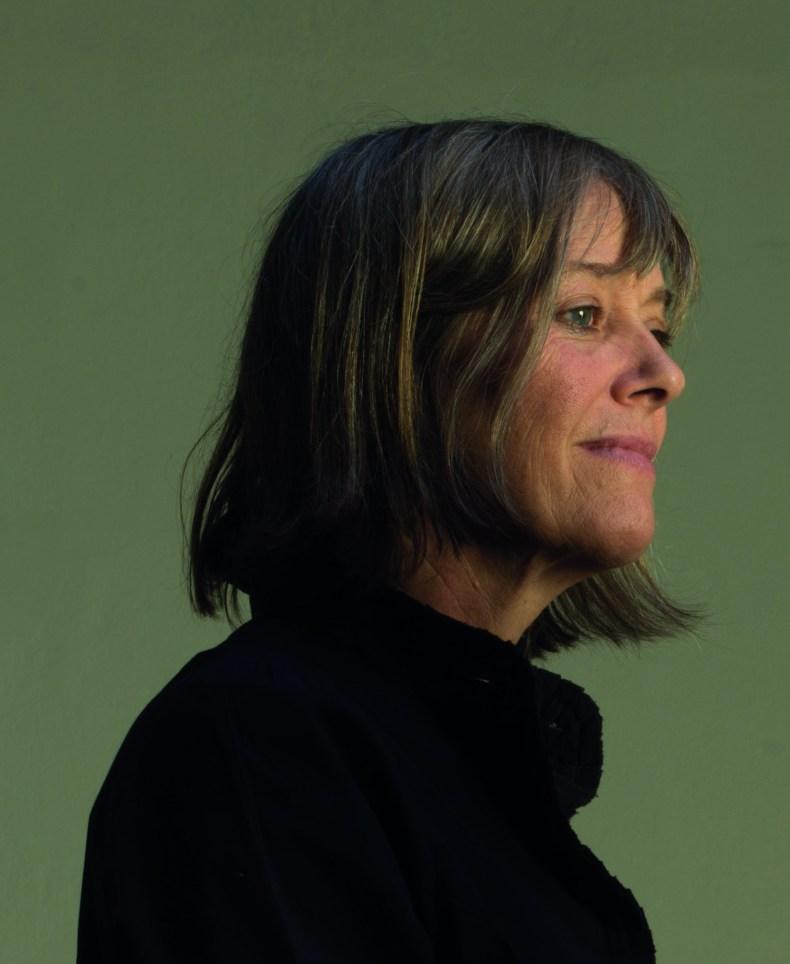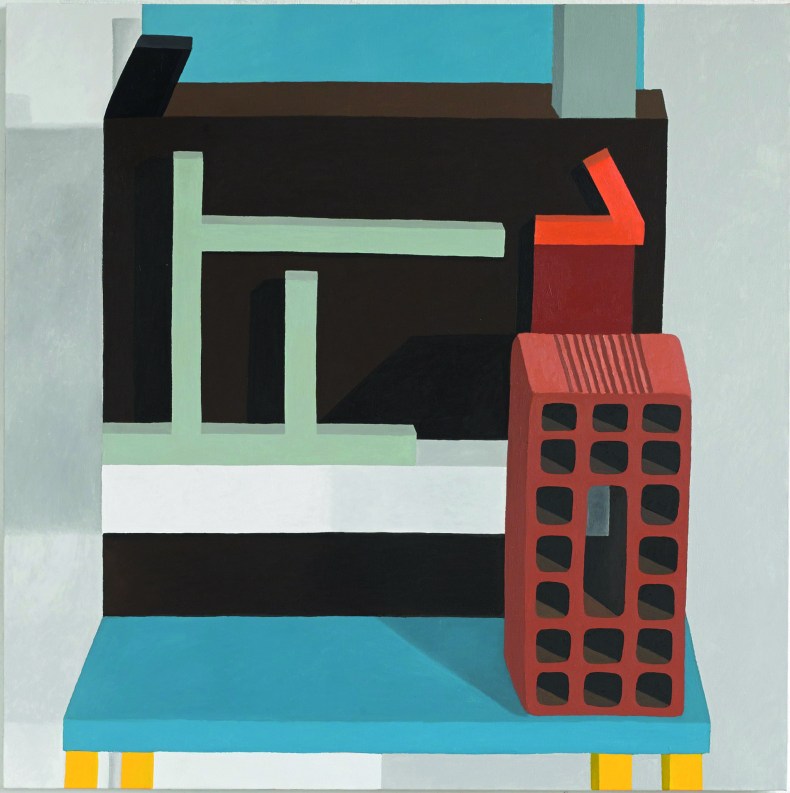Nathalie Du Pasquier’s upcoming exhibition at the Camden Arts Centre is an intriguing combination of her current practice as a fine artist and her previous career as a designer. She talks to Fatema Ahmed about setting herself new challenges
A retrospective of your work recently opened at the ICA Philadelphia, and you had the first solo show of your paintings in London this summer. Can you explain why the show at the Camden Arts Centre is rather different?
The Camden show is different from the Pace [her London gallery] and ICA shows, because I have opted for an installation. There are two galleries and I wanted to do something I have never done before, which was to paint all the walls. This was of course not possible: they couldn’t give me two months to paint the walls! That’s why I have worked out a system of modules, which completely decorate the space. I have designed some modules which are printed on wallpaper. They are all the same size – 70 × 100cm – and they are mounted together. They transform the space, making a new architecture.
And what are you showing in the gallery space itself?
There are two galleries and we have painted big stripes all around the first room and built two little rooms – 5 × 5m – in the middle of that big space, which is decorated with the modules from the first room on the outside. Inside, there are two little exhibitions – one of the rooms is covered all over with wallpaper and cut-out paintings, which fly around this little room. In the second room there is a series of drawings that I made this summer, plus some big ceramics. I had the idea of doing one drawing every day, so they are all really in the same family.
Nathalie Du Pasquier. Photo: Ilvio Gallo; courtesy Pace Gallery, London

What is a cut-out painting?
They are oil paintings on paper and look like false objects because they are all made with an axonometric perspective, so they seem to come out from the wall, which is covered in a classic type of wallpaper.
And what are the drawings?
They are done in coloured pencil and they are abstract. But as well as some of the abstract scenes – they could be trays with things on them, but they could also be abstract landscapes – I have also been drawing small objects, like stones I had in my house, or pieces of wood – also with coloured pencil. I cut them out, and I glue them on the wall among all these other drawings, which are all the same size, and sometimes it seems as if there
are real objects stuck on the wall.
You make objects called ‘constructions’, which often appear in your paintings. Do you make them with specific paintings in mind?
No, I make them first and then sometimes I paint them, so they become part of the painting, but they are raw material – like all the other things I have in the studio that could appear in a painting. I make them for the three-dimensional thrill! When I made the first ‘construction’, I wanted to make objects that I could represent in paintings, so that they would be still-life subjects, but not be recognisable; so they would not always be referring to something autobiographical.
You stopped working as a designer in 1987 to focus on painting. However you have worked on some design projects in the last decade – how did that come about and what was it like to be a designer again?
It was mainly for reasons of money because I couldn’t sell my paintings, and then some people – because of a revival of [interest in] postmodernism – contacted me to design some textiles because of my contribution to the Memphis Group. I did it with pleasure […] but it was not really part of a plan. For me, working on a surface that is going to be industrially produced is a very different thing to making a painting, of course, but I have not been designing continuously, so I think in the same way as I did 30 years ago. I have not really changed my pace.
Still Life on a Chair (2014), Nathalie Du Pasquier. Courtesy the artist

Has your approach to painting changed over the last 30 years?
If you look at the first painting I did and the most recent one, it’s difficult to think that they’re by the same person. But if you look at all the paintings in-between, you can see how small changes appear, and then all of a sudden you can see how things have been growing into something else.
I have always worked from reality. I always have a set, so for still lifes I build a set and then represent what is in front of me. But in the last four or five years, in parallel to the still lifes, I have started to work on paintings which are not taken from reality. They are kind of abstract, even though there is usually still the idea of a table, or a base with things on it – which is something that was there in some of my furniture in the 1980s, and is in the still-lifes, and continues in the abstract paintings that I am working on now.
What kind of painting has influenced you – and what do you like to look at?
I love paintings but I don’t usually look at contemporary paintings for myself. I look at the great Italian painters of the quattrocento and the great Dutch painters. I am interested in what’s going on, but I don’t get pleasure from contemporary painting apart from paintings by friends, which I like because I know the people and I know the story behind what they are doing, and that’s always interesting.
From the October 2017 issue of Apollo. Preview and subscribe here.
‘Nathalie Du Pasquier: Other Rooms’ is at the Camden Arts Centre, London, until 14 January 2018.



